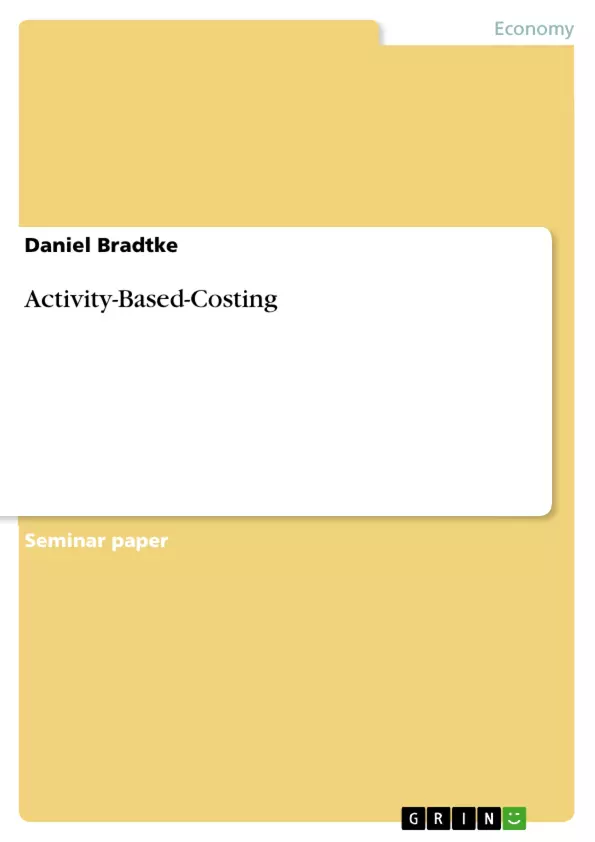The initial aim of this report is to layout the main differences of the client’s current basis of overhead absorption, compared to activity - based costing (ABC). By showing the divergence of both systems, it appears that information generated from traditional overhead absorption does not properly equip management with suitable information for decision making. An additional aim of this paper focuses on the potential benefits of activity - based costing. It illustrates the chances of ABC as a decision making tool to provide management benefits regarding the accuracy of cost and the achievement of goals and strategies. Lastly, this report highlights all information required for the implementation of ABC into the organisation. It also reveals the necessity to collect and process the information needed in the correct format at a reasonable cost.
Inhaltsverzeichnis (Table of Contents)
- Abstract
- Introduction
- SECTION ONE:
- Comparison of ABC and the client's basis of overhead absorption
- Characteristics and function of the client's current basis of overhead absorption
- Characteristics and function of ABC
- Comparison of ABC and the client's basis of overhead absorption
- SECTION TWO:
- Analysis of the potential benefits of ABC
- Determination of accurate product cost
- Profitable Product-Mix
- Process efficiency and improvement of the business plan
- Analysis of the potential benefits of ABC
- SECTION THREE:
- Implementation of ABC and the required information
- Conclusion
- References
- Bibliography
Zielsetzung und Themenschwerpunkte (Objectives and Key Themes)
This report aims to compare the client's current basis of overhead absorption with activity-based costing (ABC), analyze the potential benefits of implementing ABC, and identify the information required for its successful implementation. The report explores the limitations of traditional costing systems in providing accurate cost information for decision-making and highlights the benefits of ABC in achieving cost transparency and improving profitability.
- Comparison of traditional overhead absorption and ABC
- Potential benefits of activity-based costing
- Information requirements for implementing ABC
- The limitations of traditional costing systems
- The importance of accurate cost information for decision-making
Zusammenfassung der Kapitel (Chapter Summaries)
The report begins by outlining the characteristics and function of the client's current basis of overhead absorption, which relies on a single volume-sensitive driver for allocating overheads. It then delves into the characteristics and function of ABC, emphasizing its ability to trace costs more accurately to specific products and services. The second section explores the potential benefits of ABC, including the determination of accurate product costs, the optimization of the product-mix for profitability, and the improvement of process efficiency and business planning. The third section focuses on the information requirements for implementing ABC, recognizing the need to collect and process data in a suitable format at a reasonable cost.
Schlüsselwörter (Keywords)
Activity-based costing, overhead absorption, cost allocation, product costing, decision-making, profitability, process efficiency, information requirements, implementation.
- Citation du texte
- Daniel Bradtke (Auteur), 2004, Activity-Based-Costing, Munich, GRIN Verlag, https://www.grin.com/document/60626



